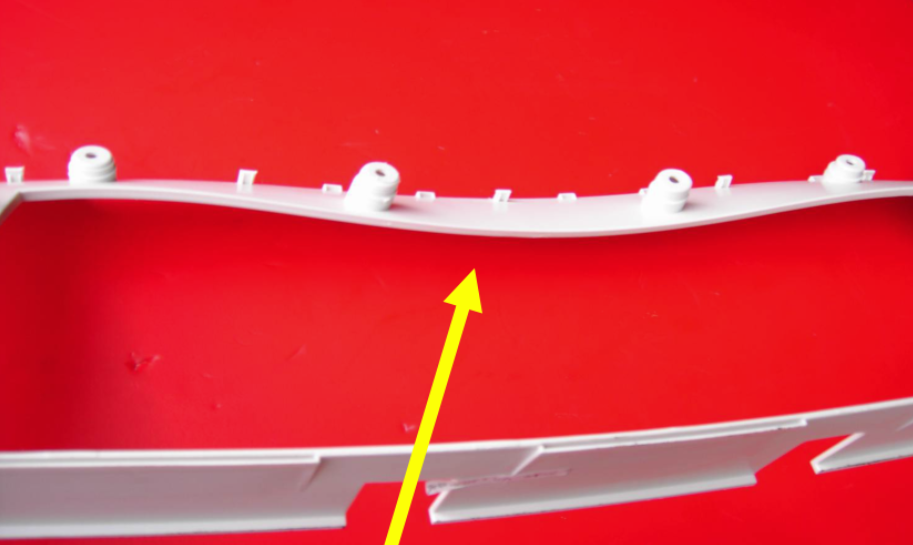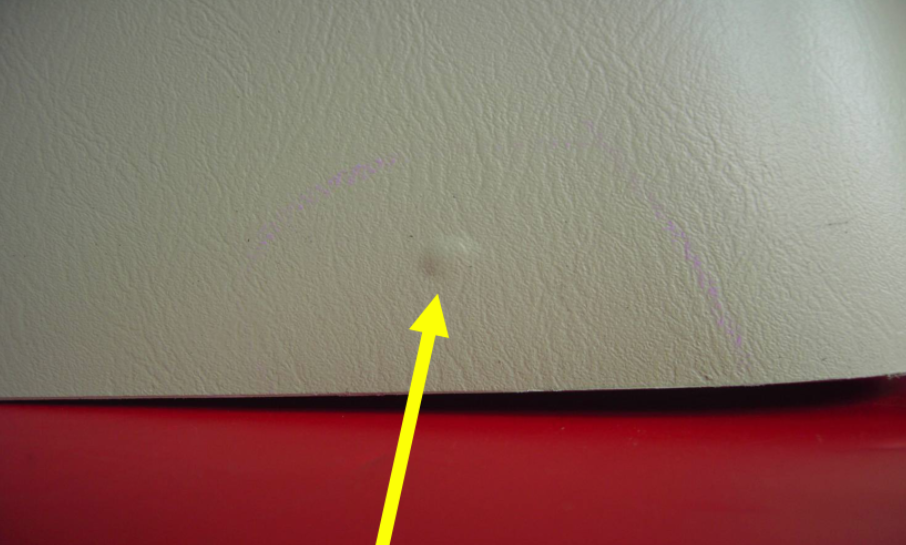Views: 0 Author: Site Editor Publish Time: 2025-06-20 Origin: Site

Common problems like sink marks, warping, and short shots make parts worse and slow down making them.
Finding and sorting problems early saves time, cuts waste, and keeps parts good.
How you set up the process, what material you pick, mold design, machine accuracy, and the environment all change how many problems happen.
Using tools like computer tests, sensors, and special checks helps find and fix problems quickly.
Making the process and design better gives you better parts, less waste, and faster work.
You can find many injection molding defects in samples. These problems can change how the part looks and works. If you find and sort these problems early, you keep quality high and save money.
Sink marks are small dents on the part’s surface. They show up in thick spots where plastic cools unevenly. Sink marks are very common and make the part look bad. They also lower the part’s quality.
Warping means the part bends or twists after cooling. Sometimes, the part will not fit or line up right. Packing pressure, melt temperature, and cooling time all change warping. These things can make the part lose its shape. This hurts how the part works and looks.
Moldflow simulations tell you how much a part will warp.
Packing pressure, melt temperature, and cooling time matter most.

flow front temperature is below 135 °C
| Process Parameters Studied | Methodology Used | Empirical Findings on Short Shots |
|---|---|---|
| Backpressure | Full factorial design | Significant influence on short-shot defects identified |
| Screw rotation speed | Regression analysis | Empirical relationships formulated linking parameters to defects |
| Spear temperature | ||
| Manifold temperature | ||
| Holding pressure transfer |
Mold pressure and injection pressure do not change short shots much.
Signal-to-noise ratios help you pick the best settings.
Flash often comes from wrong process settings
Flow lines are streaks or wavy marks on the part’s surface. They form when plastic cools at different speeds in the mold. Flow lines are a kind of surface problem that can make the part weaker. The way plastic flows changes how strong the part is and how much it shrinks. These changes can make the part break more easily.
weld lines can cut strength by more than half
| Study / Author | Material / Composite | Mechanical Property Measured | Quantified Impact of Weld Lines | Additional Notes |
|---|---|---|---|---|
| Gyung-Hwan Oh | Glass fiber-reinforced MPPO composites | Tensile strength | Strength reduction due to weld lines: 12% (0% fiber), 34% (10% fiber), 52% (20% fiber), 56% (30% fiber) | Shows increasing strength loss with fiber content |
| L.M. Martulli | Carbon fiber tow-reinforced vinyl ester SMC (42% fiber volume) | Tensile strength | Weld line samples have 48% to 88% strength compared to no weld lines | Significant strength reduction due to weld lines |
| Andrea Scantamburlo | 35wt% glass fiber reinforced polypropylene | Strength and stiffness | RHCM method increased strength by 201% and stiffness by 46% compared to traditional weld lines | Demonstrates improvement via advanced molding technique |
| R. Selden | Various thermoplastics (ABS, PPO, PA6, PPS, PP with 40% talc) | Flexural strength | Weld line coefficient ranged from 0.25 to 0.98 | Indicates variability depending on material and processing |
| Babur Ozcelik | Polypropylene (PP) | Tensile strength and impact resistance | Tensile strength stable with increased injection temp/pressure; impact resistance decreased significantly | Shows processing parameters affect impact resistance |
Jetting looks like wavy or squiggly lines on the part. It happens when plastic shoots too fast into the mold. Jetting makes the surface rough and the part weaker. You can spot jetting by looking for rough or uneven spots.
Burn marks are brown or silver streaks on the part. They come from trapped air or too much heat. Quality teams look for burn marks during checks. Operators use guides to know where and when to look for these marks. Burn marks make the part look bad and lower its quality.
Operators check important spots for burn marks.
Burn marks come from high heat, fast auger speed, or bad venting
Changing speed, heat, and venting can stop burn marks.
Voids and bubbles are empty spots or air pockets inside the part. You might see them as blisters or holes. These problems can make the part weak and easy to break. Voids and bubbles are common and should be found early to keep quality high.

Surface delamination means the top layer peels or flakes off. It happens when layers do not stick together well. You will see thin layers coming off the part. Surface delamination is a big problem and can ruin the part.
Contamination happens when other materials mix with the plastic. You might see black dots, streaks, or color changes. Contamination can make the part look bad and lower its quality. Keeping things clean and handling materials right helps stop this problem.
Tip: If you find and sort these common injection molding defects early, you keep quality high and waste low. You should check samples often and use both looking and special tools to find problems before they reach customers.
Knowing why injection molding problems happen helps you stop them. This also helps you make better products. There are five main things to check. These are process factors, material factors, mold design, machine precision, and environmental or human factors. Each one can cause problems like short shots, warping, or flash. If you study defects and watch the process, you can find the real cause. This helps you fix problems fast and avoid long stops.
You can change many settings in injection molding. These include melt temperature, cooling time, packing pressure, and mold temperature. These settings can cause many defects. If the melt temperature is too low, short shots can happen. The plastic will not fill the mold. If the cooling time is wrong, you might see warping or sink marks. Studies show melt temperature is most important. Cooling time and packing pressure also matter a lot. You should also watch how these settings work together. Sometimes, mixing settings can cause new problems.
Main process factors that affect defects:
Melt temperature
Cooling time
Packing pressure
Packing time
Mold temperature
Ambient temperature
cut cycle time by 24%Melt properties, pressure, and temperature
mold-flow simulation3D-printed channels
Room temperature or humidity changes
Tip: If you check for defects often and watch all these things, you can find the cause of short shots and other problems before they get worse.
Design of Experiments and Taguchi Methods
| Improvement Aspect | Before Optimization | After Optimization | Measurable Gain |
|---|---|---|---|
| Cycle Time | 20 seconds | 17 seconds | 15% reduction |
| Annual Output | 1,000,000 parts | 1,350,000 parts | Over 30% increase |
| Number of Presses Needed | 4 presses | 3 presses | 25% reduction in presses |
| Capital Expenditure | New press needed | No new press | Cost savings achieved |
changing from nylon to a PC+ABS blend
Transfer learning with pre-trained CNNsIn-mold pressure sensors and tie rod strain gauges
Advanced tools like laser scanning give a close look at the part’s surface. Laser scanning finds tiny problems you might not see. Real-time scan data helps you fix short shots fast. These tools also help stop sink marks and keep the surface looking good. Using advanced detection lets you fix problems before customers get the parts.
Tip: Always use process changes, good materials, smart mold design, and strong checks to keep injection molding quality high. This way, you get the best fixes for short shots and other problems.
solve problems step by stepthrow away less material and have less downtime
You often see sink marks and warping in injection mold samples. These defects happen because of uneven cooling or wrong process settings. Early detection helps you keep quality high.
You can use visual checks, pressure sensors, and laser scanning. These tools help you find problems like short shots or flash before they reach your customers.
Bubbles or voids form when air gets trapped inside the plastic. You can prevent this by using the right material and making sure the mold vents well.

All employees practice the quality self-inspection management concept of "not accepting unqualified products,
not manufacturing unqualified products, and not exporting unqualified products". A special quality management department has been established.
It uses high-precision testing facilities combined with automated testing methods and standardized control processes to control the quality of the four
major links: incoming material inspection (IQC), process product inspection (IPQC), molded product inspection (FQC), and mold shipment acceptance (0QC).
We pursue customer satisfaction and help customers achieve perfect quality.
content is empty!
content is empty!
ZHUHAI GREE DAIKIN PRECISION MOLD CO., LTD.